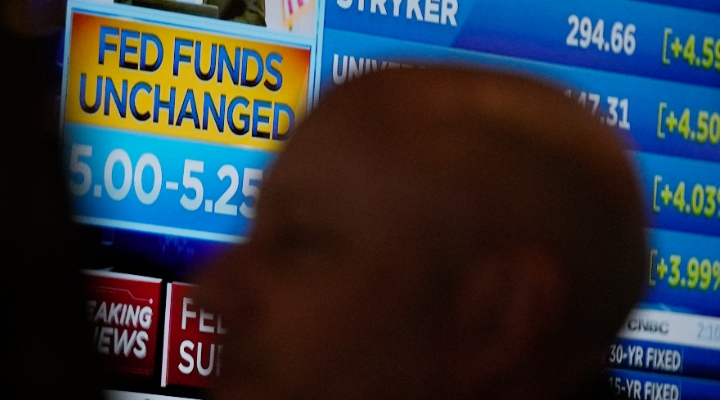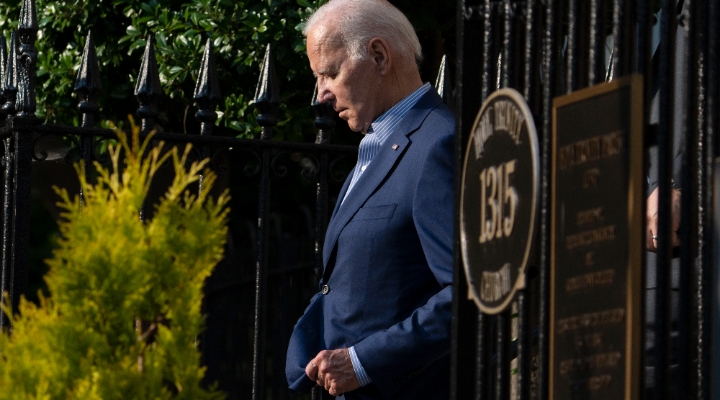
Following the sharp rise in central banks interest rates, a number of voices have warned that corporate defaults could increase significantly and even triple, because of the higher carrying cost of debt burdens in markets that are slowing down. However, these fears have not materialized – yet.
“When you read about doubling of default rates, that makes good copy, says Timothy O’Brien, Managing Director and Global Head of Diversified Industries at DBRS Morningstar. “But the question is: doubling from what level, and in what rating category?”
The U.S. high yield corporate credit spread (difference in yield between high yield corporate bonds and government bonds) presently stands at only just over 4%. “During the Covid scare”, O’Brien recalls, “it peaked at over 10%, and during the Great Financial Crisis (GFC), at over 21%. This suggests a relatively sanguine outlook among investors, at least for now.”
At the end of 2022, the trailing default rate of non-investment-grade rated companies was at a historically low 1.7%, according to S&P Global Ratings. In Q1 2023, two companies received a rating upgrade (“rising stars”) and none were downgraded (“fallen angels”). It was the same story all through 2022 and 2021, when 60 stars rose and only 22 angels fell, a trend contrary to the norm.
Fewer Firms Are Filing for Bankruptcy. Calm Before the Storm?
Similarly encouraging numbers hold for bankruptcies. At the end of Q1 2023, total bankruptcy filings in the U.S. (Chapters 7, 11, 12 and 13) amounted to 14,467, reports Yanick Desnoyers, Senior vice-president and Chief economist at Addenda Capital. “Pre-Covid, they numbered 22,780 over a same one-year period, and in 2009, during the GFC, 61,000,” he recalls.
It is the same situation in Canada: for the year ending in April 2023, the country registered 2,855 bankruptcies, compared to 2,746 pre-Covid and 6,100 in 2009. “We are still very much below the GFC numbers,” Desnoyers comments.
Desnoyers is surprised to discover that net interest payments in the Federal Reserve flow of funds data are only US$ 225 billion while they were just under US$ 300 billion in early 2021. “That fall of US$ 75 billion means that many companies have taken advantage of the lower rates that prevailed in 2021 and 2022 to emit a lot of debt and lock in low rates,” he says. That causes the debt-to-equity ratio to stand at 25% in the US, while it held at 27% pre-Covid, and towered at 60% in 2009.
Why Do Companies Default? Recessions, Mostly.
It’s not inflation nor the rise in interest rates that cause bankruptcies and debt defaults, it is recessions, Desnoyers claims.
As long as sales hold, companies are not particularly vulnerable to their debt burden and its financing cost. “But when sales fall in a recession, then debt servicing gets hurt.
“In fact, inflation, to a certain extent, is a protection against bankruptcy for a corporation because it collects inflation from consumers and buyers.”
Michael Dimler, Senior Vice-President, Middle Market Corporate ratings at DBRS Morningstar, agrees with that last point, but only to a certain extent. “In 2022, he recognizes, in the consumer services space, companies were in a highly favorable position to pass along cost inflation through price increases to consumers.”
But that may be changing. “Dimler believes that the price elasticity of demand has shrunk following the post-COVID demand rush, and we expect more companies to begin to face pushback on price increases this year.”
DBRS Morningstar’s Outlook for Credit Quality is Subdued
Against a weakening economic backdrop, Dimler’s outlook for credit quality is now more subdued.
“Profits are holding up through the first quarter, but higher rates have taken some cushion out of cash flow, making companies incrementally vulnerable to EBITDA weakness. And the banking failures earlier this year did not help the economy and the operating environment for the smaller companies that we follow. As a result, we expect negative credit rating actions to pick up in the coming year. I can’t put a figure on that, but we expect them to be higher than last year.”
S&P Global Ratings also warns of harder times ahead, “Costlier financing from higher rates and weaker corporate earnings will increase the 12-month trailing default rate of non-investment-grade rated companies to 4% by December, up from a historically low 1.7% at the end of 2022. The forecast is predicated on a mild, shallow recession later this year, though a deeper-than-feared downturn and higher interest rates could see that default rate hit 6%.”
That will not be a crisis, SPGR tempers: “Were the default rate to hit the 6% forecast … the number of speculative-grade defaults would be relatively mild compared to the roughly 12% rates during the Great Recession.”
37% of Firms are Close to Default
However, a recent study from the Board of Governors of the Federal Reserve System tells us that deeper trouble might be brewing. The authors find that a whopping 37% of firms are “distressed” – close to default.
“Our results suggest that in the current environment characterized by a high share of firms in distress, a restrictive monetary policy stance may contribute to a marked slowdown in investment and employment in the near term.”
The consequences of this distress are just down the road, it seems. “The effects in our analysis peak around 1 or 2 years after the shock (of interest rate increases), suggesting that these effects might be most noticeable in 2023 and 2024.”









:quality(80)/cloudfront-us-east-1.images.arcpublishing.com/morningstar/GJMQNPFPOFHUHHT3UABTAMBTZM.png)










